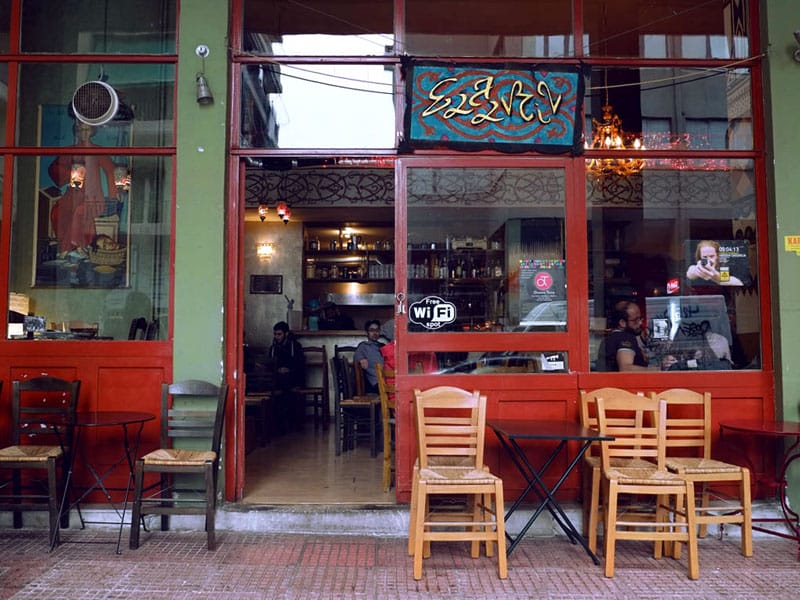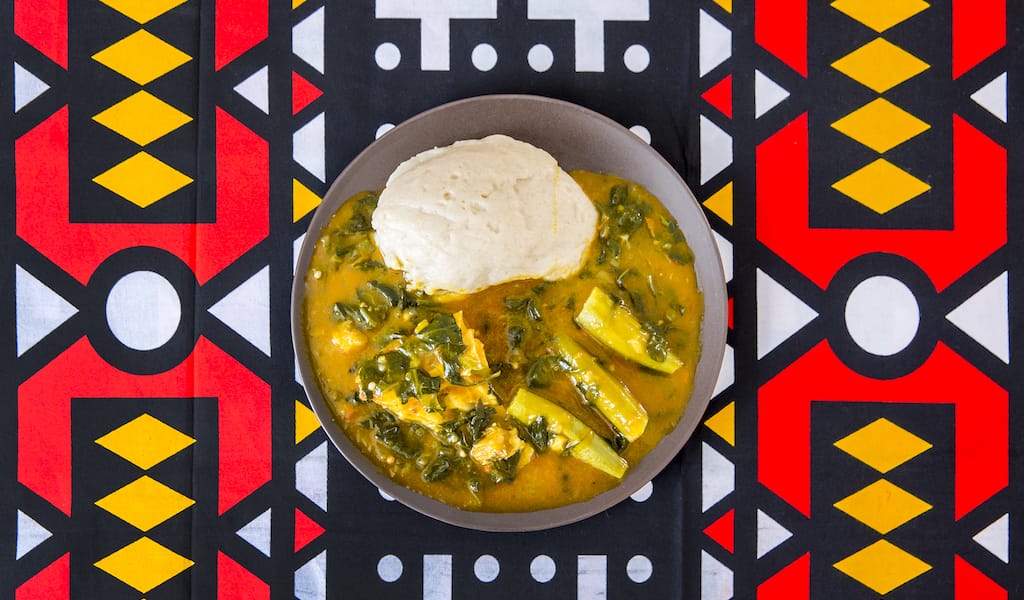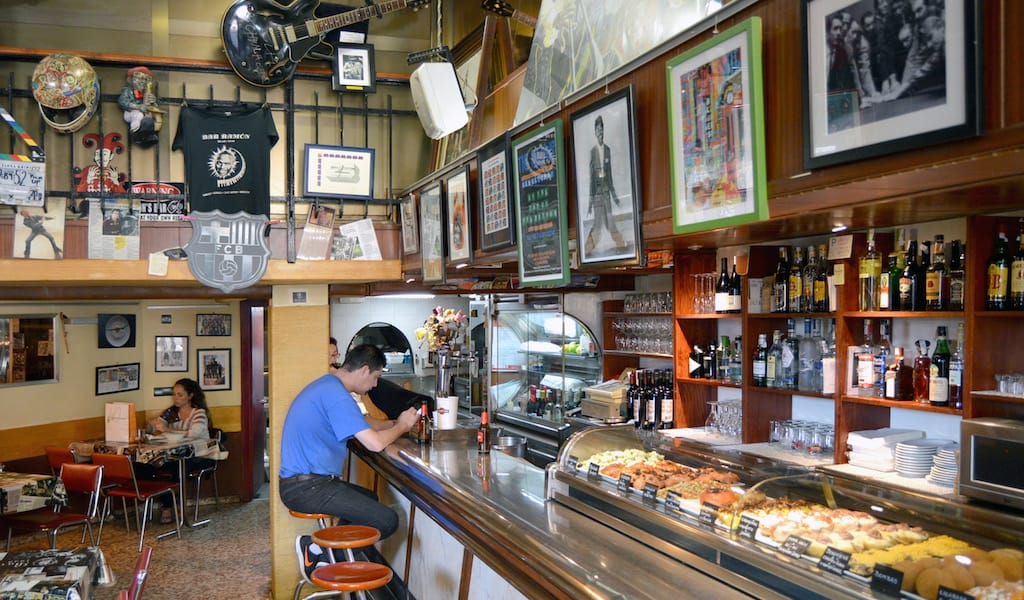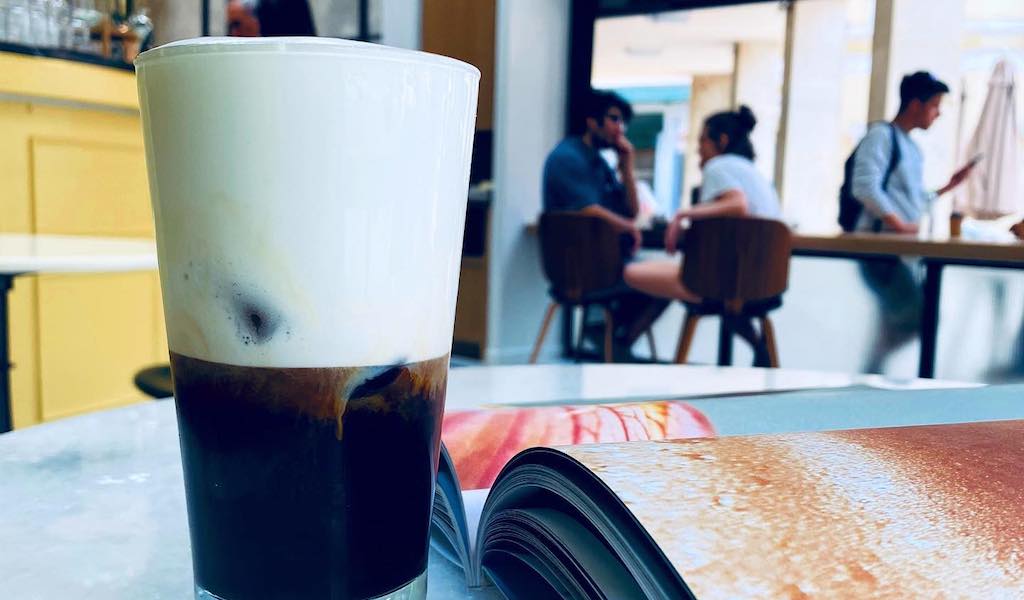Editor’s note: We’re sorry to report that Saladin has closed.
The mezedopoleio – a type of venue where mezes are passed around for all to eat – is traditionally associated with students more interested in getting drunk on cheap alcohol than savoring a nice meal. But tough times require hard drinking, which means that mezedopoleia have recently made a massive comeback in Athenian life. In the historic Keramikos area, Saladin is a venue that does double duty, fulfilling the traditional function of the mezedopoleio while taking the food component up several notches.
Like most Athens districts, Keramikos has a rich history. During the city’s “golden age” from 480-409 B.C. – the era that produced the best of Ancient Greece, from the plays of Euripides and Sophocles to the philosophy of Socrates – the neighborhood was the ancient potters’ quarter, responsible for turning out many of those Greek vases and urns now found in museums around the world. Archaeological excavations have been ongoing in Keramikos – from which the word “ceramic” is derived – since 1913.
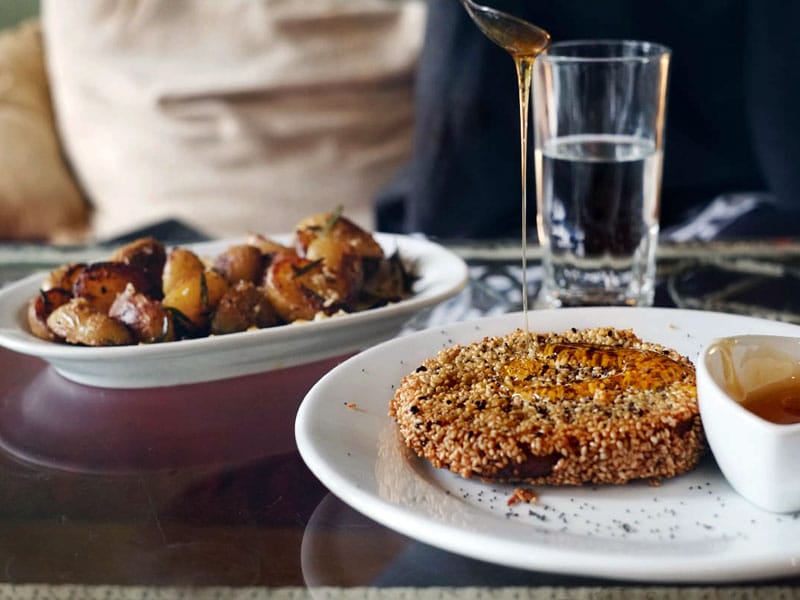
The modern neighborhood of Keramikos has always been a mixed bag: until the ’90s it was mostly a working-class area, and among the local residents were the so-called Tourkogyftoi (Muslim Roma). Then came Chinese immigrants, followed by Bangladeshis and Pakistanis, but also younger and trendier Greek residents, as the area started growing in popularity as an alternative Athenian hangout. Today, theaters, traditional restaurants and bars with live Greek music coexist with run-down neoclassical buildings and vacant parking lots full of weeds.
Located on a street full of gray buildings that seem to perfectly illustrate the juxtapositions in the neighborhood, Saladin is named after the famous 12th-century Kurdish warrior-sultan. A prominent figure in Islamic history whose name is synonymous with chivalry, though not heavy drinking, Saladin – who fought the Crusaders, a mutual enemy of the Byzantines – is something of an alternative cult icon in these parts of Athens.
The high-ceilinged walls are painted a dark, majestic red and there are mismatched chandeliers hanging above. Portraits of a number of alternative “celebrities,” from Frank Zappa to Latin American hero and liberator Simón Bolívar and Saladin himself, have been painted in huge murals in the style of Greek Orthodox religious icons and hung high on the walls. The American blues music or rebetika (the blues of Greece) playing in the background, as well as the clientele – students, men in overalls, sympathizers of the Greek left (there are quite a few anti-Nazi pamphlets scattered around) with dreadlocks who smoke and drink tsipouro like there is no tomorrow – could lead you into thinking this was just another cheap and cheerful mezedopoleio. (A word of warning: There is absolutely no way to escape the smoky environment, short of sitting outside. Some might say this is part of the charm.)
But the laid-back guys who run Saladin seem far too focused on making good food to be fazed by the revolutionary atmosphere or the locals who keep helping themselves to beers from the fridge (which they of course pay for at the end of the evening). The kitchen area is partially open, allowing diners to spy on the cooks as they knead mince into little round meatballs or chop up vegetables for salad. Everything is slightly heavier and saltier than at most restaurants, but somehow this works in favor of the place rather than against it.
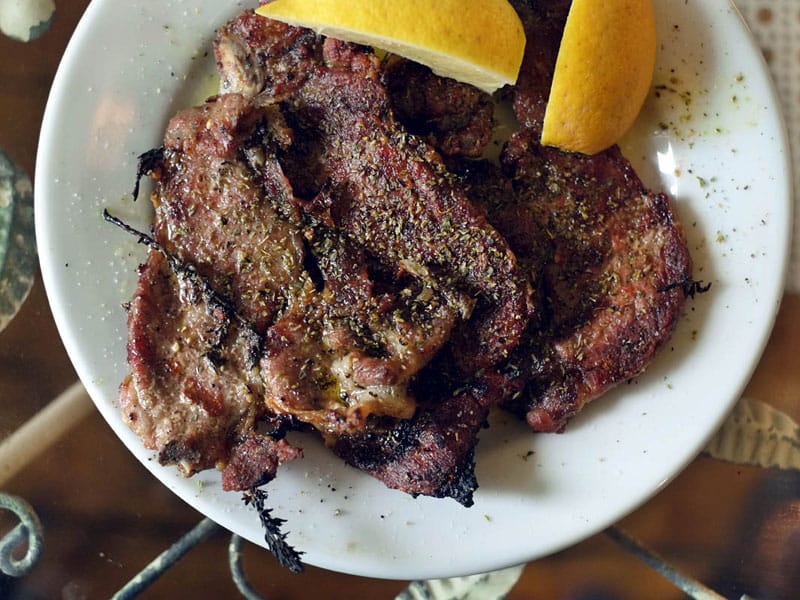
First, there are the baby potatoes baked in olive oil and sprinkled with thyme and coarse sea salt, doused in more olive oil, and served piping hot. This simplest of dishes has a crunchiness and deliciousness that makes it impossible to stop eating. The pork chops are so thinly sliced and well marinated with oregano and garlic that they have a woody, almost smoky, taste and are better enjoyed when eaten with the hands. We are also fans of the kavourma, an extremely rich, heavy dish that is popular in Turkey and Bulgaria as well.
In Greece, kavourma can be made with beef, pork or lamb, but the main characteristic of the dish is that the meat is cut into tiny pieces and slowly cooked in its own fat, a bit like a French confit; later, when the meat is cold, spices and sautéed leeks are added. At Saladin, they make a pork version with plenty of leeks, topped with a single fried egg. The dish is peppery, assertive and absolutely delicious, packing an explosive, melt-in-the-mouth flavor. Indeed, most of the dishes at Saladin are similarly strong-flavored, salty and/or peppery – all the better to be washed down with copious amounts of ouzo, tsipouro or raki.
After all, this is a mezedopoleio.
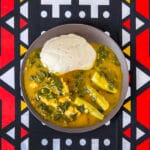 June 28, 2022 Post-Colonial Lisbon: Angola
June 28, 2022 Post-Colonial Lisbon: Angola
Editor’s Note: Though integral elements of Lisbon life, communities from Portugal’s […] Posted in Lisbon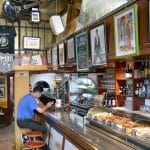 November 29, 2017 Bar Ramón
November 29, 2017 Bar Ramón
It’s not too often that you find a restaurant in Barcelona where rock & roll, blues […] Posted in Barcelona July 25, 2023 Liquid Assets
July 25, 2023 Liquid Assets
It was August 31, 1957, and Yiannis Dritsas, a representative of Nestlé Greece, was at […] Posted in Athens
Published on April 11, 2013
Related stories
June 28, 2022
LisbonEditor’s Note: Though integral elements of Lisbon life, communities from Portugal’s former colonies can sometimes be an invisible presence in their adopted land, pushed out to the periphery. With our “Post-Colonial Lisbon” series, CB hopes to bring these communities back into the center, looking at their cuisine, history and cultural life. In this installment, we…
November 29, 2017
BarcelonaIt’s not too often that you find a restaurant in Barcelona where rock & roll, blues and jazz are some of the main ingredients. But that’s just the case at Bar Ramón, an iconic restaurant and tapas bar in Sant Antoni. Mediterranean grilled red prawns, patatas bravas, and xipirones (baby squids) a la Andaluza (coated…
July 25, 2023
AthensIt was August 31, 1957, and Yiannis Dritsas, a representative of Nestlé Greece, was at the 22nd Thessaloniki International Fair. His mission? To present a new iced chocolate drink for kids. It was simple, really: add milk and cocoa powder to a shaker (essentially a cocktail shaker), shake well and serve. During a break, an…







































